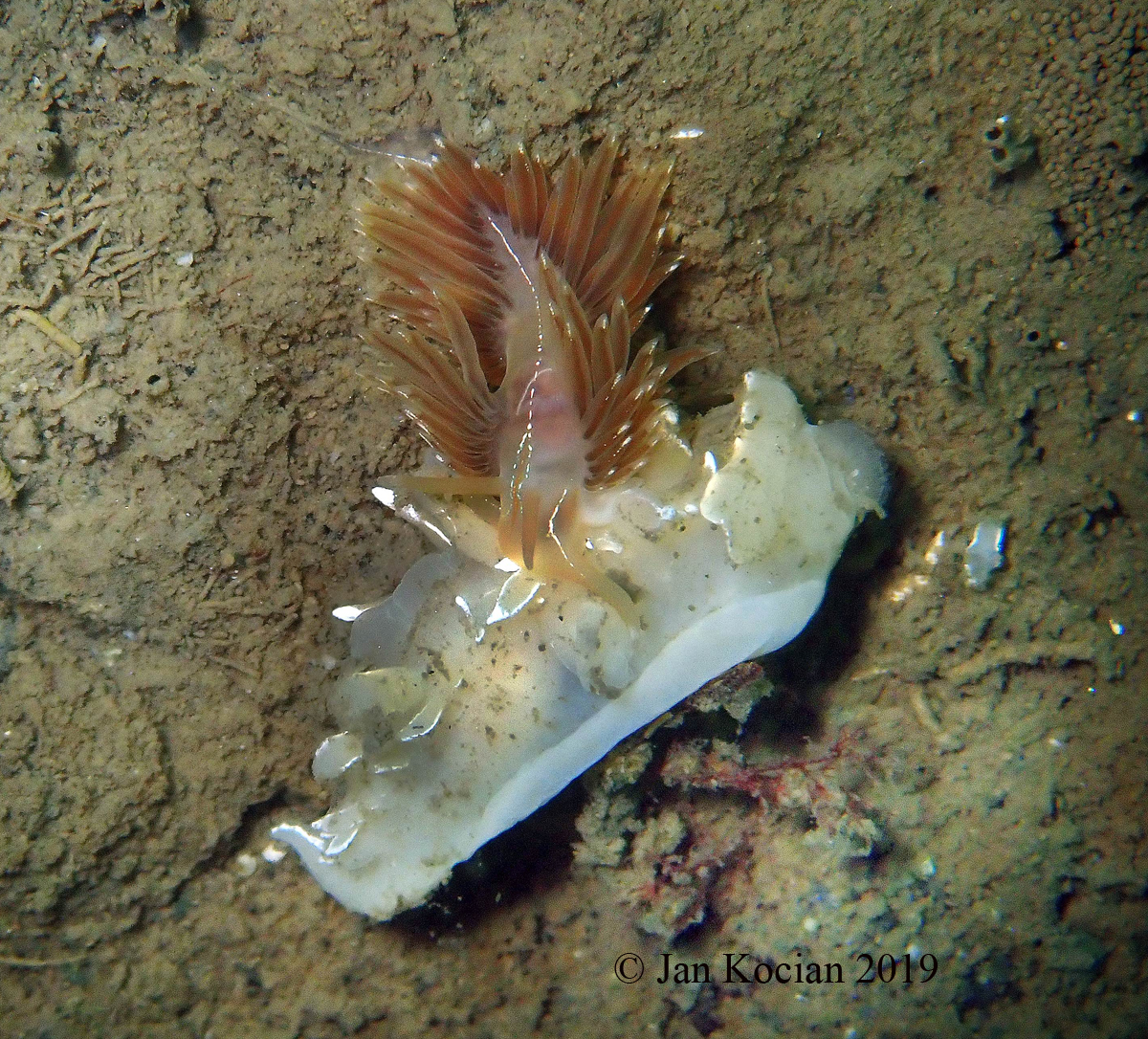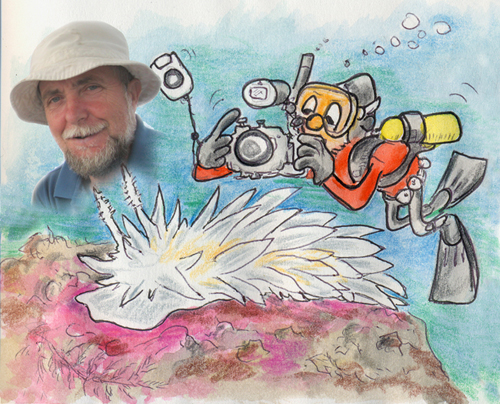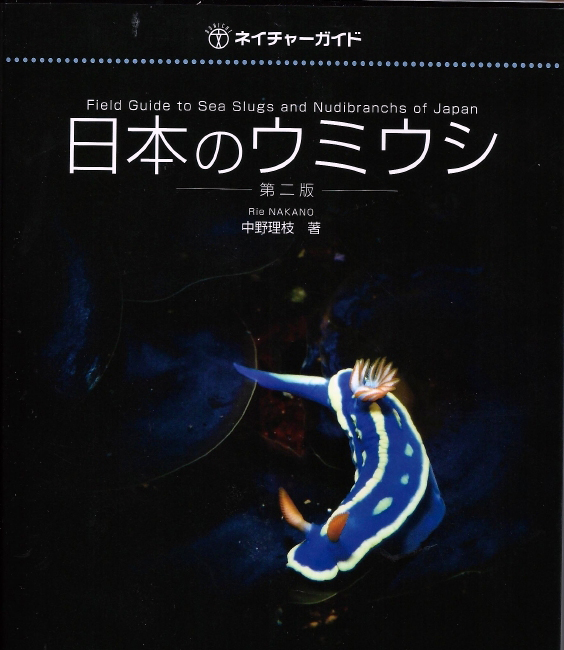 |
Sakuraeolis enosimensis
Images courtesy of Jan KocianLagoon Point, Whidbey Island, Washington
 |
Sakuraeolis enosimensis (Baba, 1930) Lucky find - Jan sent out this photo with a Thanksgiving Day wish. It struck me that the ID might be questionable. I called it Sakuraeolis enosimensis (Baba, 1930), not Hermisenda. Jan's reply - "Well, that is a surprise. It did look a little bit odd, but since the Hermissenda has such a reputation of being the bully in our waters, I went with that assumption when I found it on top of the hapless Dirona." Bill Rudman reports on his Sea Slug Forum that - "Firstly, quite a few glaucid aeolids are quite aggressive, feeding on a wide range of nudibranchs, including their own species. I think Hermissenda crassicornis is the species whose feeding behavior has been most studied." Jan's photo verifies this behavior for sure. I first reported Sakuraeolis on this coast from San Francisco Bay in my 1982 paper. It has since become a well established species there and may be the second most common species in the bay. Jan's observation adds to the species geography here, as a disjunct locale, as we have no sightings between San Francisco and Puget Sound.
Dr.Baba I sent specimens to Dr. Baba back in the 70's asking for his opinion and he returned these amazing water color drawings OneTwo Three of the dissected specimen with confirmation of its identification. Dr. Baba's passion for the animals (see (Bertsch, 1993) is reflected in the fine detail of his drawings. Remember, this is before scanning electron microscopes and protein and DNA sequencing. Thanks Jan for adding to our knowledge, both geographically and biologically, of this beautiful species. References: Baba, K. 1949. Opisthobranchia of Sagami Bay: Collected by His Majesty the Emperor of Japan. Iwanami Shoten, Japan. Behrens, D. W. 1982. Sakuraeolis enosimensis (Baba, 1930) (Nudibranchia: Aeolidacea) in San Francisco Bay. The Veliger, 24(4): 359-363. Bertsch H. 1993. Japanese contributions to Opisthobranch research with special reference to Tako Abe.Iwao Tia\Iatani,and Kikutaro Baba. |
Sammamish, WA 98074
Dec. 2019
Send Dave email at davidwbehrens@gmail.com
Send Jan email at honkoc@hotmail.com
Jan Kocian on location

I was born in landlocked Czechoslovakia, but diving became my love early in life, getting my certification in the fresh cold waters of old quarry, before wet suits were available to the diving public behind the " Iron Curtain ". After emigrating from there in 1968, the sea stayed close to my heart. I worked on research ships in the Pacific, enjoying the warm waters of the tropics for many years. Not until I retired to Whidbey Island in Washington State I started to pay closer attention to the smaller creatures of the underwater world. And what a wonderful realm it is. Combining wide angle shots with closeups, trying to show the environment in which the animal lives. My camera rig consists of Olympus M1MkII in Nauticam housing, Sea&Sea YS-D2J strobes, and Olympus TG-5 in Olympus PT-058 housing for the closeups.
Send Jan email at honkoc@hotmail.com WEBMASTER'S NOTES: As usual Jan is being very modest about how he "emigrated" to the United States. Part of the his journey involved a horrendous swim from Yugoslavia to Italy! You will need to talk to Jan in person to realize what a perlious undertaking that was!
|

Attention all you Sluggers, and you know who you are! The most comprehensive guide book to Japanese Sea Slugs/Nudibranchs is now available. An indispensable addition to your library even if it requires translation. Provides up-to -date identification of more than 1400 species, using over 1500 beautiful photos. Identification conforms to WoRMS June 2019 (in the second edition). The author is Dr. Rie Nakano who is a sea slug/nudibranch specialist in Japan. She describes of distinctive characteristics, size, and geographic distribution. Range covers all of Japan( from Hokkaido to Okinawa) , including some species found other countries/ area of Japan(Kamchatka, Philippines, Indonesia, etc). The column is packed with behavioral/ecological articles. Evidently the Online Store is going to be shut down for a while so the following may be of interest! It is a reply from a US rep for Kinoluniya Book Stores! Looks like you may need to contact a "convenience store" in your area! Dear Mr. Miller Thank you for your phone call today. We sincerely apologize for any inconvenience caused by Kinokuniya Online Store system update. I'd be happy to assist your order. Following book is available to order.
9784829972281 ??-???? ??????? $32.99
( For delivery )
bookwebusa@kinokuniya.com |
Store location: https://usa.kinokuniya.com/stores-kinokuniya
Please feel free to contact us if you have any questions.
Sincerely,
Nakashima
Customer Service Center
Kinokuniya Book Stores of America Co., Ltd.
bookwebusa@kinokuniya.com
Tel (212)869-1267 Fax (212)869-1703
Hours: Mon-Fri 11am - 5pm (EST)
Contact Rie directly at: rie_nakano1213@divers.ne.jp
And a Happy Merry Xmas to all!
Mike Miller
Webmaster

|
